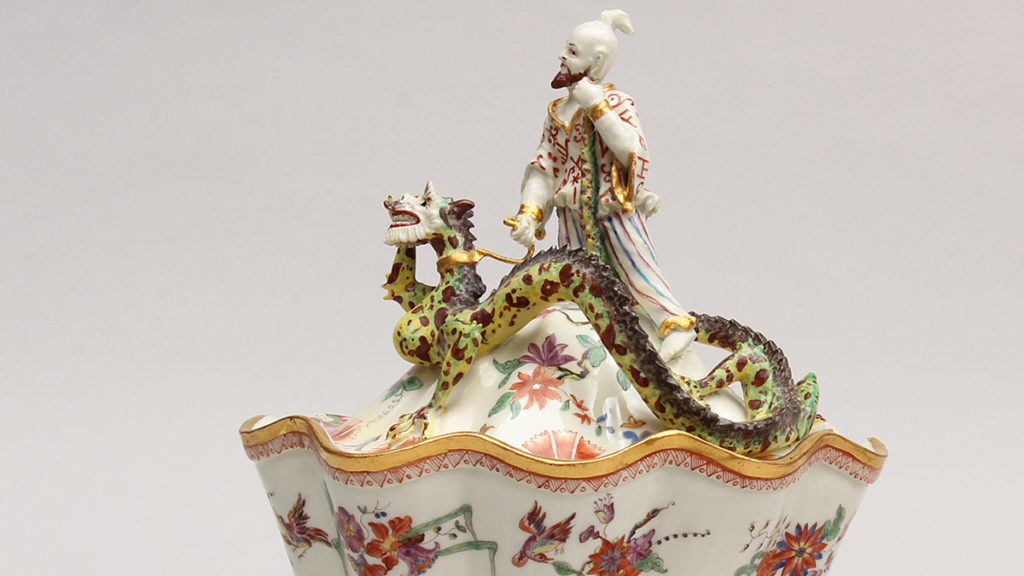In 1718, Claudius Innocentius Du Paquier established a porcelain manufactory in Vienna with a small group of partners. Rather than undertake lengthy and expensive experiments in the production of porcelain, he acquired the arcanum (the secrets of porcelain production) and key personnel from Meissen through stealth and bribery. Although Du Paquier did not have direct royal support and operated on a commercial basis, which made it inherently risky, the manufactory is known for its creativity. It survived for twenty-five years and was taken over by the Empress Maria Theresa in 1744, when it became the Imperial Manufactory.
The Gardiner Museum’s collection of Du Paquier porcelain was mostly assembled by George and Helen Gardiner and is among the top two public collections in North America. There is also a small collection of porcelain made at the Imperial Manufactory.
1. Wall Vase (detail), Austria, Du Paquier, c.1730, Gift of George and Helen Gardiner, G83.1.1220
2. Wall Vase (detail), Austria, Du Paquier, c.1730, Gift of George and Helen Gardiner, G83.1.1220
3. Sunflower Dish (detail), England, London, c.1755, Gift of George and Helen Gardiner, G83.1.1108.1-2
4. Ewer and Basin (detail), France, Sèvres, c.1758, Gift of George and Helen Gardiner, G84.1.2
5. The Monkey Orchestra (detail), Germany, Dresden, Meissen, c.1753-1775, Gift of George and Helen Gardiner, G83.1.675.1-.18
6. Sugar Box with Armorial (detail), Italy, Doccia, c.1745-1750, Gift of George and Helen Gardiner, G83.1.1105
7. Gardener with Watering Can (detail), Switzerland, Zurich, c.1770, The Hans Syz Collection, G96.5.421
8. Chocolate Pot (detail), Denmark, Copenhagen, c.1775, Gift of George and Helen Gardiner, G83.1.1104
9. Scowling Harlequin (detail), Germany, Meissen, c.1738-40, Gift of George and Helen Gardiner, G83.1.907
10. Teapot (detail), Germany, Meissen, c.1730, decorated at Lauche, Gift of George and Helen Gardiner, G83.1.764
11. Exotic Bird (detail), England, London, St. Jame's Factory, c.1751-1754, Gift of George and Helen Gardiner, G83.1.1005

